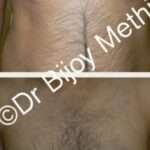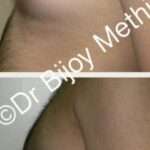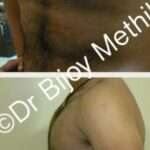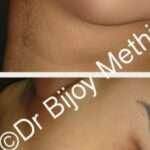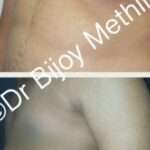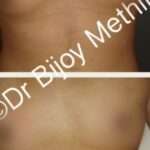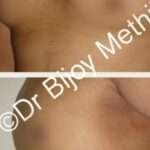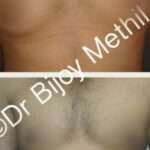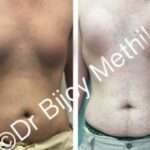Understanding Male Breast Reduction
Many men suffer from a condition known as gynecomastia, or ‘feminization’ of the male breast. In this condition extra fat and breast tissue accumulate in the chest area, giving the male an unnatural feminine fullness to their chest. Gynecomastia can occur secondarily as a result of several medical conditions or certain drugs. Alternatively, it may occur without any predisposing factor. Either way, it is a condition that can be very embarrassing for many men.
It can easily be treated with a male breast reduction procedure. During this treatment, excess fat is either removed with liposuction alone or via a combination approach involving direct excision and liposuction.
In the latter, a scar is hidden around the perimeter of the areola. Results are long lasting and natural-looking and carry a high rate of patient satisfaction.
Procedure
The Surgery : If your gynecomastia consists primarily of excessive fatty tissue, liposuction is used to remove the excess fat. A small incision, 3 – 4mm, is made around the edge of the areola (the dark skin that surrounds the nipple) or, the incision may be placed in the underarm area. If excess glandular tissue is the primary cause of the breast enlargement, it will be excised, with a scalpel alone or in conjunction with liposuction. An incision is made in an inconspicuous location on the edge of the areola. The excess glandular tissue, fat and skin is cut from around the areola and from the sides and bottom of the breast. The liposuction cannula if required is inserted through the existing incisions. In extreme cases where large amounts of fat or glandular tissue have been removed, excess skin may have to be removed. Occasionally, a small drain is inserted through a separate incision to draw off excess fluids. The choice of technique & components to be used, as well as eventual scarring depends on the discussion at the consultation. It would be unwise trying to figure out options by reading on a website due to the large number of individual variables concerned. It may take an hour and a half. However, more extensive procedures may take longer.
Hospital Stay
It is most often performed as an outpatient procedure, but in extreme cases, or in those who have other medical conditions, an overnight hospital stay may be recommended.
Anaesthesia
Performed under general, or in some cases, under local anaesthesia plus sedation.
Recovery
Whether you’ve had excision or liposuction, you will feel some discomfort for a few days after surgery which can be controlled with medications. After the surgery, you will need to wear a pressure garment for 6 weeks to reshape your skin to you new chest contours. You may resume normal activities in about a week after surgery.
Occasionally, a touchup may be desired to further improve the results. Some of the possible complications include – anaesthesia related complications, swelling & bruising (temporary), bleeding, infection, and contour irregularities.
Risks
As with any surgery, there are risks. (These are rare & we do take the utmost care to minimize them) These include infection, skin injury, excessive bleeding, adverse reaction to anesthesia, and excessive fluid loss or accumulation. In cases where there is too much excess tissue there might be the need for a second procedure to remove more tissue after the skin has retracted.


